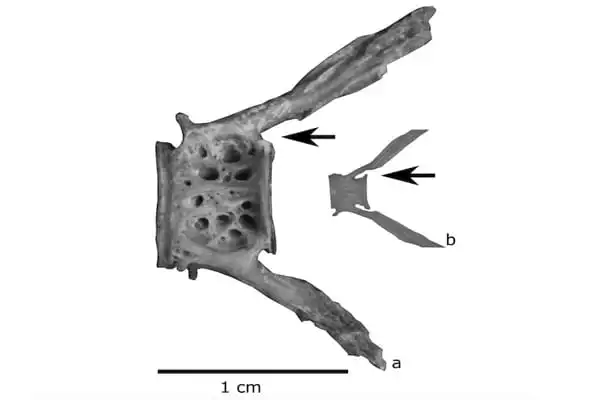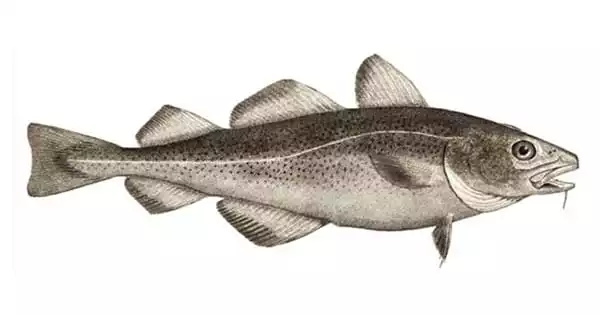‘Atlantic cod were imported during the 1850s, likely as a (largely) deboned, dried, and salted product from the East Coast of the United States,’ according to an excavation at Thompson’s Cove in San Francisco. The study emphasizes the significance of global maritime trade in northern California during the Gold Rush. San Francisco, it turns out, has been a destination for lovers of imported delicacies since the days of the Gold Rush.
An excavation at Thompson’s Cove in San Francisco revealed that “Atlantic cod were imported during the 1850s, likely as a (largely) deboned, dried, and salted product from the East Coast of the United States,” according to findings published recently in the peer-reviewed Journal of Anthropological Research. The results underscore the importance of global maritime trade in northern California during the Gold Rush.
Co-author Brittany Bingham, a doctoral student in anthropology at the University of Kansas, performed genetic analysis on 18 cod bones recovered from Thompson’s Cove to determine if they came from cod caught in deep nearby Pacific waters or were shipped in packages by boat from Atlantic fisheries. Her findings from five ancient DNA samples show that Atlantic cod was imported during the Gold Rush’s first year.
Bones, according to Bingham, are better preserved and more suitable for analysis than other materials left behind by San Francisco’s rapid population growth. (During the first year of the Gold Rush, between 1848 and 1849, the area’s 800 residents quickly swelled to more than 20,000.)
Compliance work is difficult in many ways because you don’t have a lot of control over the excavations, and this case was kind of an extreme example of that the fieldwork conditions were overwhelming and I was the only archaeologist on site.
Kale Bruner
“Bones preserve better than other things that do not last as long in the archaeological record,” she explained. “You won’t get a good DNA sample from every bone because some are burned, and soil and other factors can affect preservation, so we usually look for DNA and figure out what we’re looking at. However, bones are frequently moved elsewhere, and they may be thrown in a different location than the rest of the bones, so you don’t have the entire specimen to examine. That’s where people like me come in; we’ll take the one tiny piece of bone that might have been discovered and figure out where it came from.”
Bingham’s findings were among the first archaeological results to confirm findings from historical newspapers and invoices: To support the population boom, San Francisco’s early history included the importation of a wide variety of fish and seafood.
The project began when the Musto Building, which was built in 1907 at Thompson’s Cove, where the city was founded, underwent mandatory retrofitting to make it more earthquake resistant, triggering a California compliance law requiring archaeological work in conjunction with construction at the site. The building now houses a private social club.
Kale Bruner, a KU anthropology doctoral candidate, worked on the Thompson’s Cove construction site. Bruner currently works as a research associate at the Museum of the Aleutians.
“Compliance work is difficult in many ways because you don’t have a lot of control over the excavations, and this case was kind of an extreme example of that the fieldwork conditions were overwhelming and I was the only archaeologist on site,” Bruner explained. “They were only excavating dirt in one location at a time, so I only had one piece of machinery to keep an eye on, but we were constantly hitting archaeologically significant material. It was essentially two years of monitoring that kind of activity and documenting everything that was discovered as quickly as possible.”
Aside from evidence of Atlantic cod, the authors reported 8,000 total specimens or fragments of animal bone and nearly 70,000 total artifacts collected. More academic papers on the historical significance of the site will be produced as a result of the work.

Other findings from Thompson’s Cove have been published, including evidence of a California hide and tallow trade, eating of wild game, hunting of ducks and geese, and even the importation of Galapagos tortoises, according to lead author Cyler Conrad, adjunct assistant professor of anthropology at the University of New Mexico and archaeologist with Los Alamos National Laboratory.
He described the Gold Rush era as exciting and chaotic, a time that in some ways mirrored the supply chain problems plaguing the world in the COVID-19 era.
“During the Gold Rush, it took many months for vessels to arrive in San Francisco, so when you needed things, they didn’t always arrive when you needed them, and when they did arrive, they were often no longer needed,” Conrad explained.
“You can find descriptions of San Francisco as a muddy mess, a kind of tent city with shacks built upon shacks all the way up to the shoreline, just stacked with crates and boxes. Even at Thompson’s Cove, I believe Kale unearthed several essentially intact crates of frying pans and shovel heads. Shiploads of shovels could arrive, but perhaps everyone already had one, or perhaps it was winter, and no one was in the gold fields, and you have all this material that accumulates right along the shoreline – but that was convenient for our work.”
Conrad stated that the work to determine the Atlantic origins of cod bones discovered at the site was a significant contribution to understanding maritime trade of the era when Atlantic cod was either shipped by boat all the way around Cape Horn – or shipped to Panama, then hauled across the isthmus before being shipped up to the Northern California goldfields.
“We have this really fascinating assemblage of material, and it’s remarkable that we only found 18 bones that we can attribute to the genus of cod from the Atlantic,” he said. “Brittany’s DNA work was critical for this because it’s difficult to distinguish between Atlantic and Pacific cod bones because their bone morphology is nearly identical.” We were able to link Brittany’s DNA to some minor differences in the very far tail vertebrae. If you consider how cod was prepared and salted, almost all bones were removed, with the exception of the very last few bones.”
“Perhaps this was quickly prepared and exported cod from the East Coast as a result of the rush to the goldfields and the demand for food.” Maybe they were just shipping out whatever they could. There are some intriguing details in the cod bones, and we would never have been able to answer these questions without DNA – and it really supports the identification that, yes, these are Atlantic cod – and that opens up a whole new window into this human experience.”





